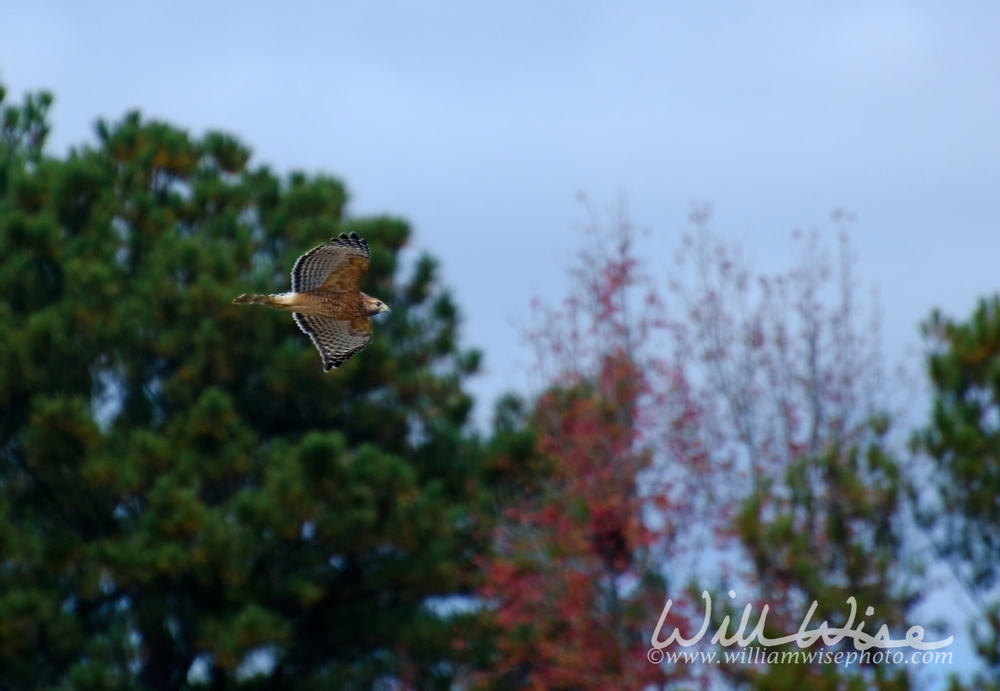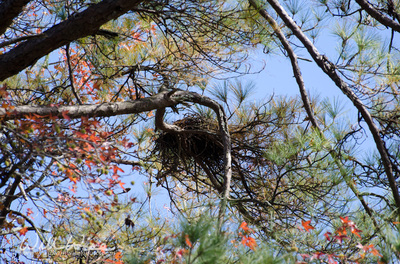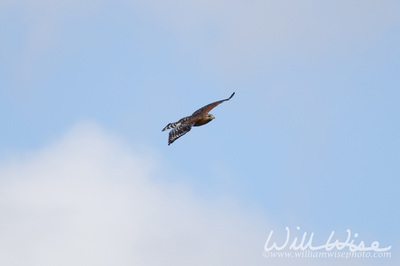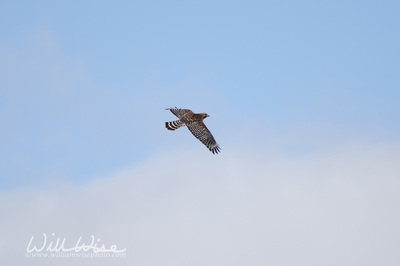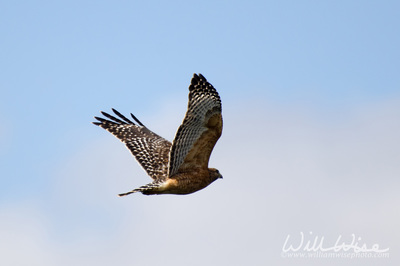|
Tuesday, 12:39 PM – Monroe, Georgia. A few weeks back I had watched a hawk sail and land in the wood line near Walton Pond 2 behind my office. My curiosity peaked, I went back by the pond, this time with my eyes up in the trees. Narrowing his landing down to a grouping of tall pines and Sweetgums, I didn’t find the hawk, but the possibility of its nest. Today’s sixty-one degree, partly sunny afternoon afforded some warm rays and I decided to go sit under that nest I had previously spied out. After sitting 30 minutes reading Bartram’s Travels and seeing nothing, lunch break was over and I headed back toward my office. Just as I neared the back of the shelter, out from the woods and right in front of my face flew a large hawk. But what kind? A Red-tailed or a Red-shouldered? As he circled over the pond, my initial clue to his identity was the bold black and white markings on the wings and tail. No more need be known; I was looking at a beautiful Red-shouldered Hawk (Buteo lineatus). The black and white banding on the tail being the “tail-tell” sign. The Red-tailed Hawk (Buteo jamaicensis), being appropriately named, sports a red tail that lacks the bold black and white banding. While the banded tail tells all, there are also several other differentiating clues. The Red-tailed Hawk, also common in this area, is a bit larger. Besides the tail being red, it is also much shorter than his Red-shouldered cousin’s tail. On September 29, 2012 as I was studying to better my skills at identifying hawks, a gorgeous Red-tail perched on a snag across from my house in Athens, Georgia, affording me a living illustration. His shorter red tail could be clearly seen as he sat with his back toward my front porch where I sat with a cup of coffee in one hand and Wheeler and Clark’s “Photographic Guide to North American Raptors” in the other.
The chests of these two raptors can also give a clue to their identities. As the hawk circled over the pond behind my office and rose higher into the air, I could discern the distinctly reddish-orange barred chest characteristic of the Red-shouldered Hawk. The Red-tailed Hawk possesses a darker streaked belly band just below a usually bare chest. The size of the nest I had earlier observed was also a clue to this hawk’s identity. According to the Cornell Lab of Ornithology, the Red-shouldered Hawk’s stick nest is about 2 feet in diameter and lined with bark, lichens, and conifer sprigs. The Red-tail’s nest is larger, being a tall pile of dry sticks up to 6.5 feet high and 3 feet across. If all these clues weren’t enough, a study of the habitat in which I observed this hawk would be another clue to his identity. Red-tails usually occupy open habitats such as grasslands, pastures, and fields. Red-shouldered Hawks are forest raptors and tend to live in open sub-canopy stands near water; perfectly describing the pond and woods behind my office. After buzzing my face and circling the pond, my Red-shouldered Hawk disappeared below the horizon back near the grove of trees near where I had been staking out the nest. Perhaps, before I disturbed him, he was sitting and watching the banks of the pond to make a meal of the Northern Watersnake I had seen just the afternoon prior. Imagine, I sit below a hawk nest for nearly an hour and see nothing, only to be nearly hit in the head by him while walking back indoors! Walton County, Georgia
0 Comments
Your comment will be posted after it is approved.
Leave a Reply. |
Categories
All
Archives
September 2025
|
|
All content is ©williamwisephoto.com. Please don't steal images. My images are available at dreamstime.com. Stock sales go into the shelter photography program.
|
In December 1993 I came to know the Designer and Creator of this wonderful planet and its creatures: Jesus Christ.
|
Donations help support the animal shelter adoption photography equipment and adoption website hosting and domain fees. Thanks for your support!
|

